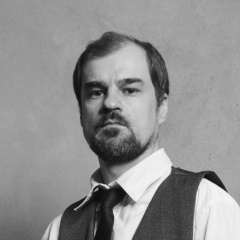Находить ресурсы внутри себя мне помогает медитация. Говорить жизни «да» в состоянии без ресурса учит гештальт-терапия.
Это я не к тому, что один метод может только это, а второй только то. Я как раз думаю, что оба метода хороши в том, и в другом. Я, скорее, про себя. Про свой опыт. Помните, у Никитиных: «Следует шить. Шить сарафаны и легкие платья из ситца. / Вы полагаете, что все это будет носиться? / Я полагаю, что всё это следует шить». Так вот отвечать «жить!» на вопрос «так что же делать дальше?» меня учит именно гештальт-терапия.
Если конкретнее, то я учусь меньше рассуждать и больше делать. Действовать в текущих обстоятельствах, а не ждать удобных. Делать что-то дальше даже после неудачи. Быть более стабильным эмоционально в разных условиях.
И мне кажется, это прямое следствие того, что гештальт-терапия предлагает оставаться внутри проблемной ситуации. Иногда специально подливая масла в огонь — фрустрируя — с помощью неудобных вопросов, имитации нерасполагающих условий. Это обычно вызывает набор привычных реакций. Если ситуация проблемная, вероятнее всего, эти реакции проблему не решают. Познакомившись с ними, гештальт-терапевт, будет мешать происходить им в следующий раз. Чтобы клиент смог выработать новые, работающие подходы. Чтобы научился находить выход, варясь в котле эмоций, переживаний и желании привычных реакций.
Это я не к тому, что один метод может только это, а второй только то. Я как раз думаю, что оба метода хороши в том, и в другом. Я, скорее, про себя. Про свой опыт. Помните, у Никитиных: «Следует шить. Шить сарафаны и легкие платья из ситца. / Вы полагаете, что все это будет носиться? / Я полагаю, что всё это следует шить». Так вот отвечать «жить!» на вопрос «так что же делать дальше?» меня учит именно гештальт-терапия.
Если конкретнее, то я учусь меньше рассуждать и больше делать. Действовать в текущих обстоятельствах, а не ждать удобных. Делать что-то дальше даже после неудачи. Быть более стабильным эмоционально в разных условиях.
И мне кажется, это прямое следствие того, что гештальт-терапия предлагает оставаться внутри проблемной ситуации. Иногда специально подливая масла в огонь — фрустрируя — с помощью неудобных вопросов, имитации нерасполагающих условий. Это обычно вызывает набор привычных реакций. Если ситуация проблемная, вероятнее всего, эти реакции проблему не решают. Познакомившись с ними, гештальт-терапевт, будет мешать происходить им в следующий раз. Чтобы клиент смог выработать новые, работающие подходы. Чтобы научился находить выход, варясь в котле эмоций, переживаний и желании привычных реакций.
Finding resources within myself helps me meditate. Gestalt therapy teaches life to say “yes” in a state without a resource.
This is not to say that one method can only do this, but the second only that. I just think that both methods are good in both. I, rather, to myself. About your experience. Remember, the Nikitins: “It should be sewn. Sew sundresses and light dresses from chintz. / Do you believe that all this will be worn? / I believe that all this should be sewn. " So answer "live!" to the question "so what to do next?" Gestalt therapy teaches me.
More specifically, I am learning to reason less and do more. Act in the current circumstances, rather than wait for convenient ones. Doing something further even after failure. Be more stable emotionally in different conditions.
And it seems to me that this is a direct consequence of the fact that gestalt therapy offers to stay inside a problem situation. Sometimes deliberately adding oil to the fire - frustrating - with the help of uncomfortable questions, simulating non-disposing conditions. This usually causes a set of familiar reactions. If the situation is problematic, most likely, these reactions do not solve the problem. Having become acquainted with them, a gestalt therapist will prevent them from happening the next time. So that the client can develop new, working approaches. To learn how to find a way out, cooking in a cauldron of emotions, feelings and the desire for habitual reactions.
This is not to say that one method can only do this, but the second only that. I just think that both methods are good in both. I, rather, to myself. About your experience. Remember, the Nikitins: “It should be sewn. Sew sundresses and light dresses from chintz. / Do you believe that all this will be worn? / I believe that all this should be sewn. " So answer "live!" to the question "so what to do next?" Gestalt therapy teaches me.
More specifically, I am learning to reason less and do more. Act in the current circumstances, rather than wait for convenient ones. Doing something further even after failure. Be more stable emotionally in different conditions.
And it seems to me that this is a direct consequence of the fact that gestalt therapy offers to stay inside a problem situation. Sometimes deliberately adding oil to the fire - frustrating - with the help of uncomfortable questions, simulating non-disposing conditions. This usually causes a set of familiar reactions. If the situation is problematic, most likely, these reactions do not solve the problem. Having become acquainted with them, a gestalt therapist will prevent them from happening the next time. So that the client can develop new, working approaches. To learn how to find a way out, cooking in a cauldron of emotions, feelings and the desire for habitual reactions.
У записи 9 лайков,
0 репостов,
306 просмотров.
0 репостов,
306 просмотров.
Эту запись оставил(а) на своей стене Егор Мигачёв




























